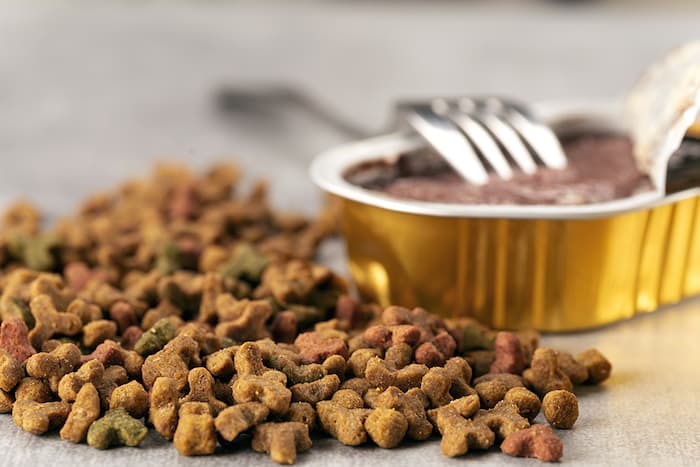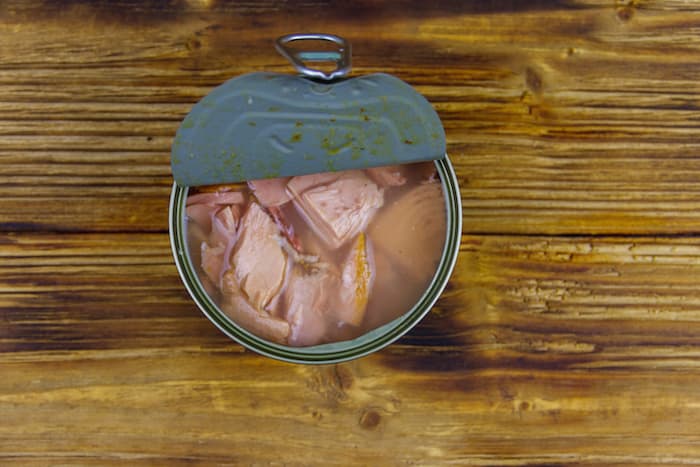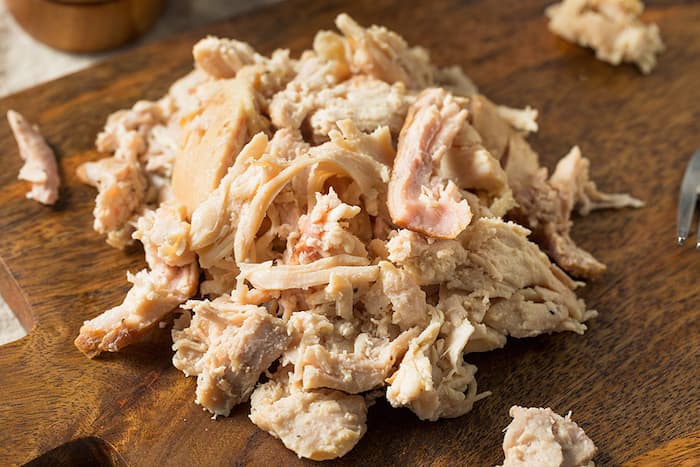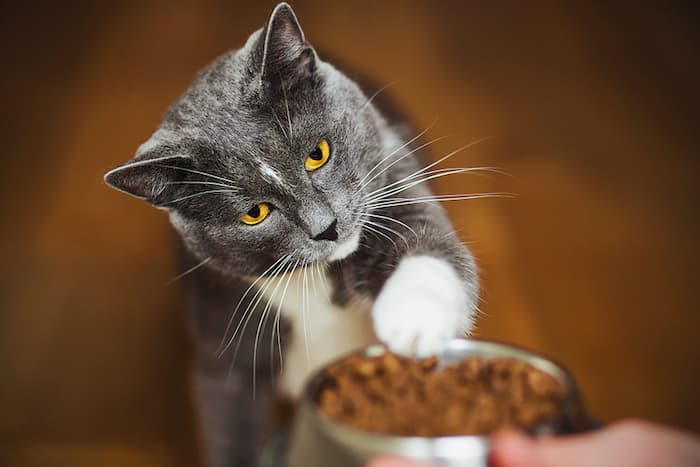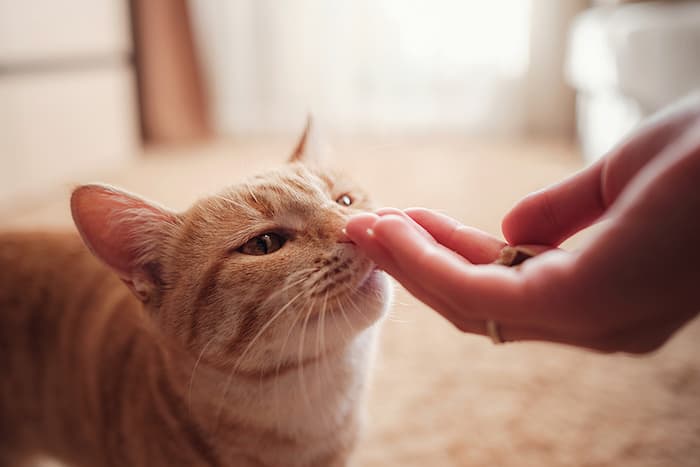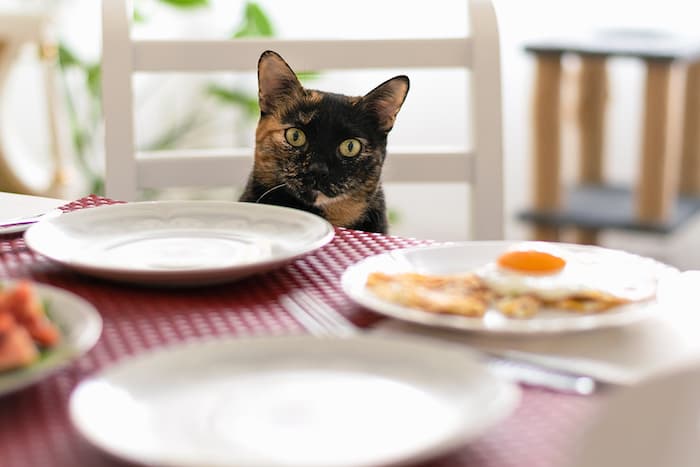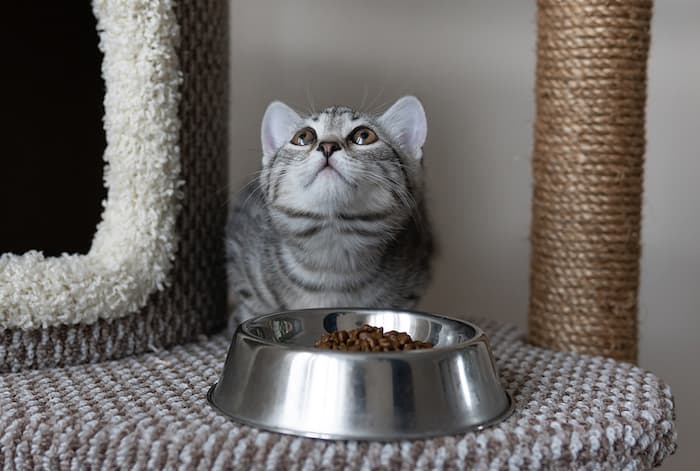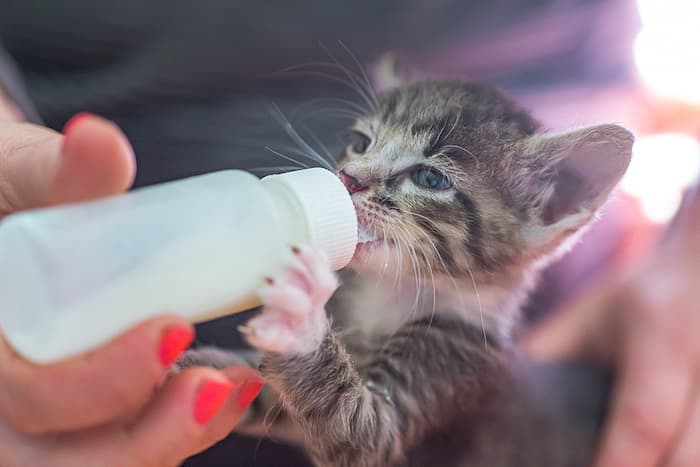Cats benefit from a healthy balanced diet just as humans do. In the word of cat food, there is a wide range of options. There are dry, freeze-dried, wet, and fresh food options that come in bags or cans with longer shelf-life to the more perishable options that need to be refrigerated.
Ingredients To Look for in a Cat Food
You should pick a cat food that contains a small amount of protein, a small amount of fat, and a moderate amount of carbohydrates. Carbs are a good thing because they provide the body with energy, but too much of a good thing can cause problems, including diarrhea and vomiting. In addition to a healthy diet, make sure your cat gets enough exercise since this helps to keep its digestive system healthy.
Is Dry or Wet Cat Food Better?
For starters, providing a mix of options can help avoid a cat from getting bored of its food or even keep it from becoming addicted to certain foods. You of course will need to consider your own situation such as your budget or your means to obtain your cat’s food. Wet food in cans and dry food will last much longer than fresh food that needs to be refrigerated. If you have the means to go out and buy fresh food weekly and your cats prefer it, you can certainly do so but it’s not a must.
If your cat isn’t drinking enough water throughout the day, even when you add one of those flowing water drinking bowls, wet food should be included so your cats stay hydrated.
The current research dictates that most felines should only eat wet cat food. Ultimately, however, it is good to discuss this with a vet.
What Human Foods Can Cats Eat?
Tuna – Perhaps the most popular fish fed to cats, tuna is actually a good choice for cats. Commercial cat foods often feature it, and you can often find it mixed in with other meat such as chicken or beef. It is important to save this for a special treat, however.
Chicken – Yes, cats like chicken. There’s no question about it. Chicken offers them protein, which is important for their health. However, commercial cat food usually includes chicken meals, which is not the best choice for your cat’s needs.
- Tuna,
- Mackerel
- Chicken
- Beef
- Poultry
- Eggs
- Banans
- Blueberries
- Strawberries
- Cantaloupe
- Seedless Water Mellon
- Carrots
- Spinach
- Corn
- Pumpkin
- Cooked Broccoli
- Rice
- Oatmeal
Some of these on the list might no be of interest to your cats but they are safe. Additionally, there are certainly a lot more human foods that are safe for cats even though they are included in this list. If anything, it’s more important to know what foods are bad for cats.
What Food Is Bad for Cats?
Most of the things that are commonly fed to our feline friends could be classified as “nutritious” food when you think about it. Cats have always been known to eat a well-balanced diet, which is why the commercial pet food industry makes a killing by providing us with all sorts of treats but not what we really need. What ingredients should you avoid in cat food?
- Preservatives such as butylated hydroxytoluene (BHT) and butylated hydroxyanisole (BHA)
- Meat byproduct
- Cornmeal and carbohydrate fillers
Avoid Too Many Fats
If a cat eats a lot of fat, for example, it will gain weight fairly rapidly. A high-fat content cat will also typically display a higher metabolic rate than a low-fat cat. If your cat eats a lot of commercial cat foods, consider a high protein diet as well because it can help your cat maintain a healthy weight without putting it at risk of serious health complications.
Cat Allergies and Medical Conditions
Some cats are allergic to dairy products, eggs, and certain types of foods. In such cases, a diet that consists of low-fat meat, poultry, and eggs (without cheese) may be dangerous. You can talk to your veterinarian about which foods are safe for your pet. As with any allergy, an over-allergenic cat could develop skin problems, breathing difficulties, or other complications. Talk to your veterinarian before you embark on a restricted diet.
Other special concerns related to lactose intolerance in cats. Milk and dairy products cause an abnormal build-up of the hormone galactose in the bloodstream. This can cause a range of symptoms, including vomiting, diarrhea, and even osteoporosis in susceptible cats. Cats who are lactose intolerant need to be carefully monitored to ensure they do not suffer ill effects.
Cats who are insulin sensitive or have adrenal disease will also experience diarrhea when fed foods with a high glucose level, resulting in the same problems mentioned before.
There are many other cat health conditions that will require a specialized diet. A veterinarian can help provide an appropriate diet plan.
Can Cats Eat Dog Food?
While it’s not toxic to cats, most dog foods have less vitamin A and protein than cat food does so an occasional kibble or even a meal is not going to make your cat ill, but you should certainly not make it a habit to feeding your cat dog food as it will lead to poor health in the long-term.
Don’t give cats peanut butter as a treat as some dog owners do. For cats, this can be poisonous. A cat given peanut butter or other processed food similar to peanut butter for that matter may end up vomiting and experience diarrhea after eating just a small amount.
Human Foods That Are Bad for Cats
- Milk
- Cheese
- Yogurt
- Raw Eggs
- Raw Meat
- Raw or Cooked Bones
- Nuts
- Chocolate
- Grapes
- Raisins
- Seeds
- Food with Xylitol
- Coconut Milk
- Uncooked Bread Dough
- Onion
- Garlic
- Alcohol
- Caffeinated Beverages
Further Reading
Cat and Kitty CareHow to Groom a CatIs My Cat Ill?
How Much Should I Feed My Cat?
In general cats older than 6 months should be fed twice a day.
This is one of the most common questions pet owners have, especially when they are first learning how to properly care for their cat. Cats are finicky eaters and generally will consume a lot less than they should on a daily basis, so it’s important to monitor their food intake.
Moderation is the key. Moderation means varying the amount of food-based upon age, health, and age of the cat and a cat’s level of lactose intolerance or other problems.
How to Feed Kittens
Kittens need more food per pound than adult cats. Kittens between 3 weeks old to 6 months old need to be feed 3 times a day.
Newborn Kittens
1-week old kittens need to be bottle-fed every 2 to 3 hours and 2 to 4-week old kittens need to be bottle-fed every 4-6 hours. Use the rule of 8 milliliters of formula per ounce of body weight per day. For example, a 4-ounce kitten should get 32 milliliters of formula a day. At week 4 you can begin to ween a kitten off the bottle by offering to spoon-feed them. For more information on bottle-feeding a kitten, see this post by the Best Friends Animal Society.
Weening Kittens
At weeks 3 1/2 to 4, you can begin to ween a kitten off the bottle by offering it spoonfuls of formula. Over the next several weeks, you can begin taper down the formula and introduce solid food. At week 5, feed the kitten 3 parts formula to 1 part solid. At week 6, provide 2 parts formula to 1 part solid. At week 7, provide 1 part formula to 1 part solid.
What Should You Feed Kittens?
It is important that you become familiar with what to feed your kittens so that the health of your kittens will be ensured. Kittens need a balanced diet so that they grow up healthily and remain strong. Generally, there is specific kitten food that you can buy.
Newborn kitten formula should not be cow’s milk, it should be approved kitten formula.
Hand Feeding Newborn Kittens
If you have a very young baby kitten, you may need to feed it milk. This should be discussed with a vet before attempting it unless it’s a serious situation and the kitten is at risk of dehydration. You should bottle-feed your kitten carefully. Always follow the instructions.
Conclusion
Feeding cats isn’t a difficult thing. Luckily, many cats like eating the same food. There is a lot of great information available about how and what to feed your cat, so doing just a little bit of research will really help.

